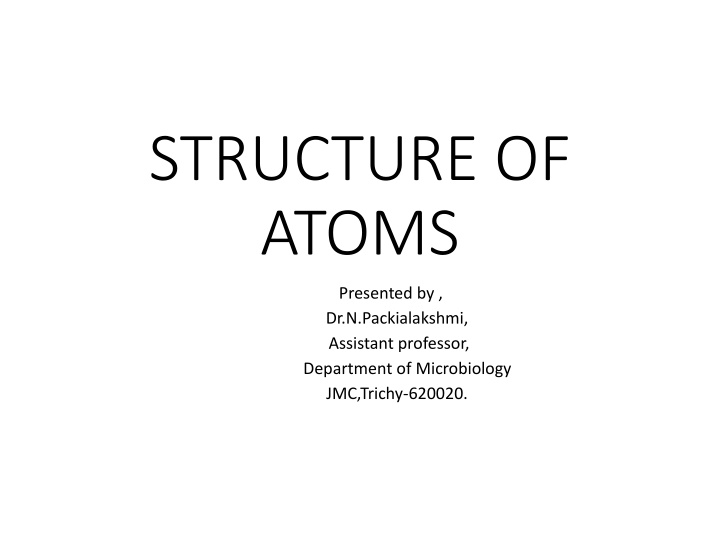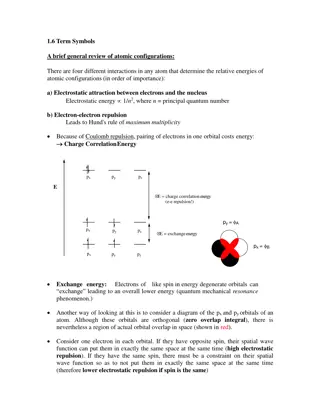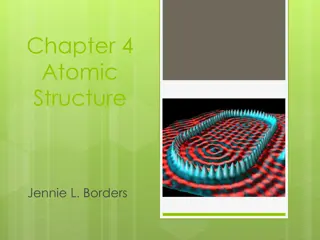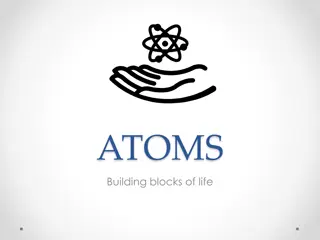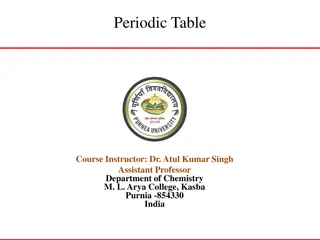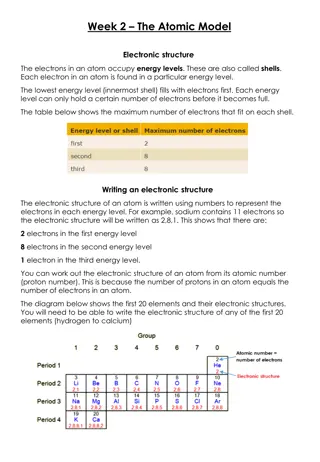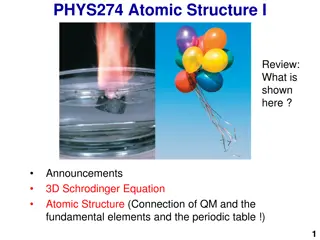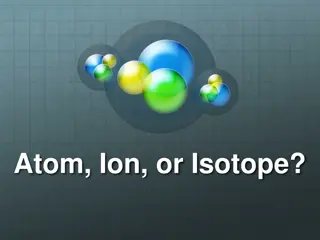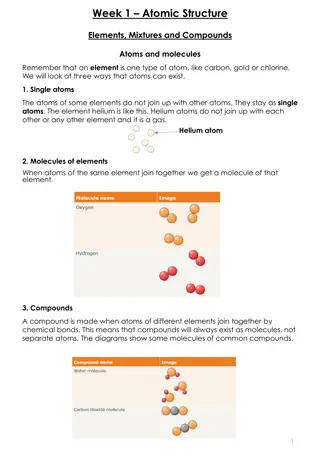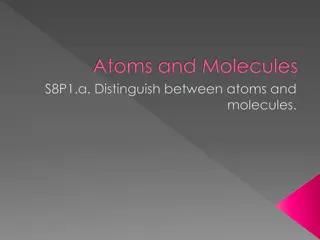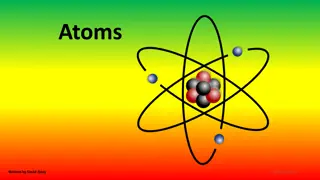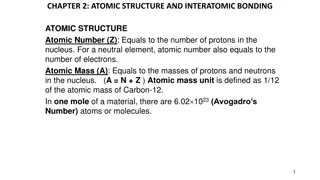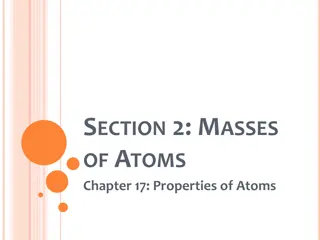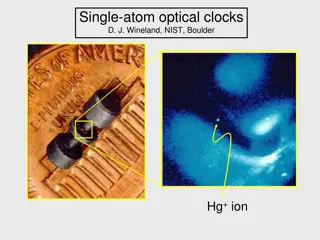Atomic Structure Overview: Components of Atoms and Their Properties
Atoms, the building blocks of matter, consist of protons, neutrons, and electrons. Protons and neutrons form the nucleus, with electrons in shells around it. These atomic particles have distinct charges and masses crucial in determining the identity and behavior of elements. Understanding the structure of atoms is fundamental in chemistry and physics, explaining how elements interact to form molecules and substances with unique properties.
Download Presentation

Please find below an Image/Link to download the presentation.
The content on the website is provided AS IS for your information and personal use only. It may not be sold, licensed, or shared on other websites without obtaining consent from the author.If you encounter any issues during the download, it is possible that the publisher has removed the file from their server.
You are allowed to download the files provided on this website for personal or commercial use, subject to the condition that they are used lawfully. All files are the property of their respective owners.
The content on the website is provided AS IS for your information and personal use only. It may not be sold, licensed, or shared on other websites without obtaining consent from the author.
E N D
Presentation Transcript
STRUCTURE OF ATOMS Presented by , Dr.N.Packialakshmi, Assistant professor, Department of Microbiology JMC,Trichy-620020.
Overview of Atomic Structure Overview of Atomic Structure Atoms are made up of particles called protons,neutrons,and electrons,Which are responsible for the mass and charge of atoms. ATOM: The smallest possible amount of matter which still re -trains its identity as a chemical element, consisting of a nucleus surrounded by electeons
PROTON:positively charged sub-atomic particle forming part of the nucleus of an atom and determining the atomic number of an element.It weighs 1 amu NEUTRON:A subatomic particle forming part of the nucleus of an atom .It has no charge.It is equal in mass to a proton or it weighs 1 amu
*Retains all of the chemical properties of an element. *Atoms combine to form molecules which then interact to form solids ,gases or liquids. *For example, water is composed of hydrogen and oxygen atoms that have combined to form water molecules. *Many biological processes are devoted to breaking down molecules into their component atoms
ATOMIC PARTICLES *Atoms consist of three basic particles *protons *electrons *neutrons *The nucleus center of an atom contains the protons( positively charged)and the neutrons (no charge ). *The outermost regions of the atom are called electrons shells and contain the electrons (negatively charged) *Atoms Have different properties based on the arrangement and number of their basic particles
The hydrogen atoms (H) contains only one proton.one electron ,and no neutrons. This can be determined using the atomic number and The mass number of the element
ATOMIC MASS Protons and neutrons have approximately the same mass, about 1.67 10^-24grams . Scientists define this amount of mass as one atomic mass unit or one Dalton. Although similar in mass ,protons are positively charged, while neutrons have no charge. Therefore, the number of neutrons in an atom contributes significantly to its mass,but no to its charge
Electrons are much smaller in mass than protons,weighting only 9.11 10^-28 grams ,or about 1/1800 of an atomic mass unit. Therefore,they do not contribute much to an element 's overall atomic mass . When considering atomic mass it is customary to ignore the mass of any electrons and calculate the atoms mass based on the number of protons and neutrons alone
Atomic Number and Mass Number The atomic number is the number of protons in an element,while the mass number is the number of protons plus the number of neutrons
